Cellulose is the primary component of plant fibers and cell walls, as well as the most plentiful carbohydrate on Earth.
Cellulose has seen routine use as a raw material in paper and cotton since ancient times, but more recently, cellulose nanofiber (CNF) has garnered a great deal of attention for its potential to enhance the functionality of cellulose by defibration to the nano level.
CNF boasts “[five] times the strength of steel while weighing only 1/5 as much.”
It also offers a wide range of other desirable properties, including “transparency,” “low thermal expansion and high heat resistance,” “gas barrier property” and “thickening property and thixotropy.”
Since CNF is a plant-derived substance, its use also can also ensure a reduction in environmental impact.
These factors have led to CNF developing a profile as a popular new material following carbon fiber. This is particularly evident in the transportation equipment and automotive fields, where lightweight components fabricated with CNF combined with resin are contributing to a notable reduction in CO2 emissions.1
The range of different environments in which automobiles are utilized means that CNF must exhibit and maintain its beneficial material properties across a wide temperature region, from low to high temperatures.
This article outlines a series of bending tests performed to evaluate the impact of temperature on the flexural strength and modulus of nylon 6 (PA6) that had been strengthened with CNF and glass fiber (GF).
Measurement System
Table 1 displays the test configuration used. Measurements and tests were all performed using a Shimadzu AGX™-V precision universal testing machine (Figure 1). Figure 2 highlights the condition of the test, while Table 2 lists the specific test conditions.
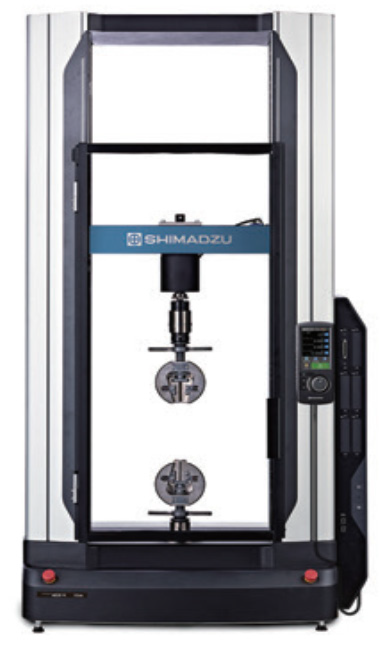
Figure 1. AGX™-V Precision Universal Testing Machine. Image Credit: Shimadzu Scientific Instruments
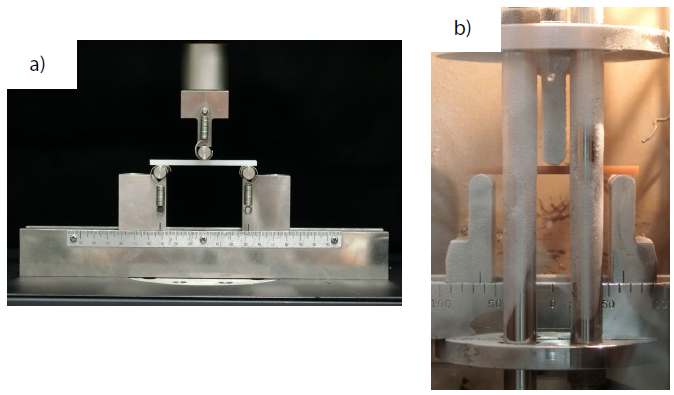
Figure 2. Condition of Test (a: Room Temperature, b: In Thermostatic Chamber). Image Credit: Shimadzu Scientific Instruments
Each of the room temperature tests was conducted using a 3-point bending test jig for plastic (Figure 2a), while the test in a thermostatic chamber was performed using an extension rod and a box-type jig (Figure 2b).
The role of the box-type jig is to convert any tensile load applied by the testing machine into bending load on the specimen, therefore, avoiding any unwanted buckling of the extension rod as a result of compression loads.
The tests were carried out under temperature conditions ranging from -30 °C to 80 °C to better simulate the typical environments that automobiles are used in.
A total of seven types of test specimens were prepared, including PA6 without fiber addition and CNF/PA6 and GF/PA6 composites with three distinct wt% levels of fiber concentration (3, 5, 10 wt%), respectively.
All specimens were fabricated according to the ISO 178 regulation’s guidance, with all tests were performed with n = 3 of each specimen type.
Table 1. Test Configuration. Source: Shimadzu Scientific Instruments
| . |
. |
Precision universal testing
machine |
AGX-V |
| Load cell |
1 kN |
| Thermostatic chamber |
Refrigerator Thermostatic Chamber TCR1WF |
| Test jigs |
3-point bending test jig for plastic (room temperature)
Box-type jig (in thermostatic chamber) |
| Distance between supports |
64 mm |
| Support radius, punch radius |
R5 mm |
| Software |
TRAPEZIUM™ X (single) |
Table 2. Test Conditions. Source: Shimadzu Scientific Instruments
| . |
. |
| Specimen dimensions |
Length 80 mm × width 10 mm × thickness 4 mm |
| Test speed |
1 mm/min (strain < 0.3%)
20 mm/min (strain ≥ 0.3%) |
| Test temp. (°C) |
5 temperature conditions (-30, 0, RT, 60, 80) |
| Specimen type |
PA6
CNF/PA6 (3 wt%, 5 wt%, 10 wt%)
GF/PA6 (3 wt%, 5 wt%, 10 wt%) |
| Number of tests |
n = 3 |
Test Results
Figure 3 displays example test results for -30 °C, room temperature and 80 °C.
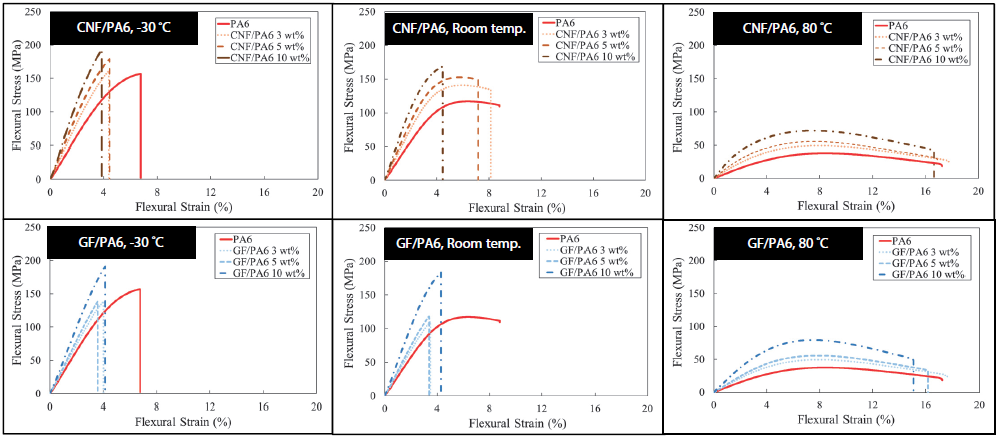
Figure 3. Test Results. Image Credit: Shimadzu Scientific Instruments
Specimens tested at both room temperature and high temperatures exhibited ductile behavior as stress decreased. Rupture did not occur as stress decreased gradually after the point of maximum stress.
At low temperatures, however, specimens exhibited brittle behavior, rupturing immediately once the maximum stress was reached, followed by an immediate stress decrease.


Figure 4. Correlation of Flexural Strength and Temperature. (a) CNF/PA6 (b) GF/PA6. Image Credit: Shimadzu Scientific Instruments
Figure 4 highlights the correlation between flexural strength and temperature for each specimen. Both CNF/PA6 and GF/PA6 exhibited a degree of temperature dependence (Figure 4), with flexural strength decreasing as temperature increased.
Strength values were found to increase as the percentage of fiber content grew, while in some specimens, GF/PA6 strength was found to be lower than that of PA6, depending on the temperature.
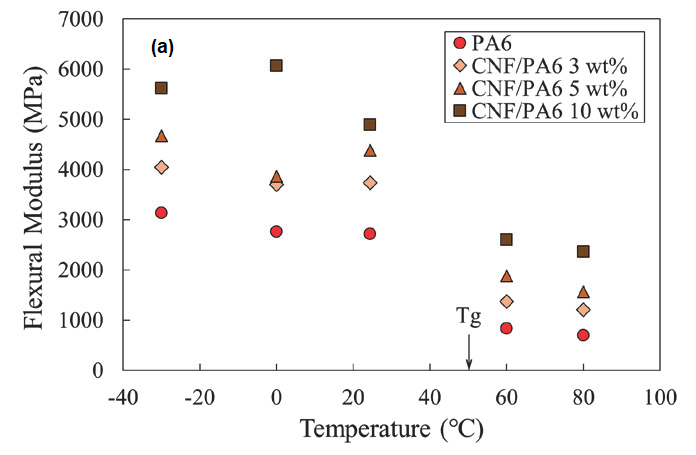
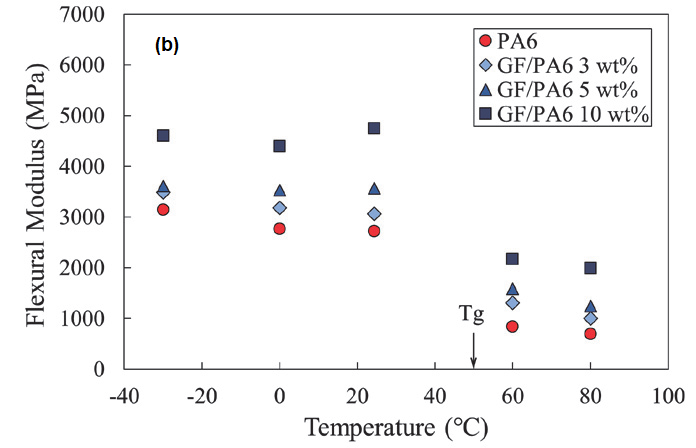
Figure 5. Correlation of Flexural Modulus and Temperature. (a) CNF/PA6 (b) GF/PA6. Image Credit: Shimadzu Scientific Instruments
Figure 5 highlights the correlation between flexural modulus and temperature for each specimen.
Flexural modulus increased as fiber content percentage became higher in both reinforcing fibers, while the flexural modulus of the CNF reinforced composites was found to be higher than that of the GF reinforced specimens – the latter was not impacted by fiber percentage content.
In comparison with flexural strength, the temperature dependence of the flexural modulus was less evident, and there was almost no change in the flexural modulus in the range from -30 °C to room temperature and in the range from 60 °C to 80 °C.
Flexural modulus was found to decrease significantly from room temperature to 60 °C. It was theorized that the specimens’ physical properties altered at around the glass transition temperature (50 °C) of PA6 – which was the matrix resin.
Conclusion
This article summarized the bending tests of two different types of fiber reinforced resins (CNF- and GF-reinforced). These tests were conducted under a range of temperatures, with results highlighting that flexural strength and flexural modulus are influenced by test temperature.
It is possible – and advisable – to confirm and elucidate the temperature characteristics by conducting tests using the instrument composition outlined here.
References
- Ministry of the Environment, Japan, NCV (Nano Cellulose Vehicle) Project http://www.env.go.jp/press/103177.html
- Takeshi Semba, Nanocellulose Symposium 2018, Abstracts, 319- 320 (2018)
Acknowledgments
Produced from materials originally authored by Y. Kamei from Shimadzu Scientific Instruments Inc.

This information has been sourced, reviewed and adapted from materials provided by Shimadzu Scientific Instruments.
For more information on this source, please visit Shimadzu Scientific Instruments.